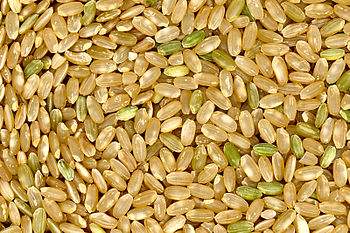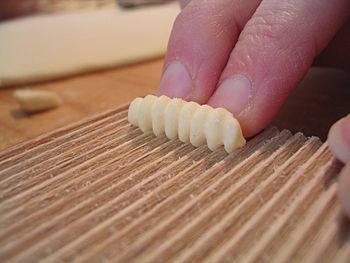We've all been there. We find a great recipe for a one pot meal and plan to make it for dinner. Then, the day gets busy and dinnertime arrives and we didn't make it to the grocery store. Or, we get to the grocery store and forget the recipe or the grocery list. Even if we guess the ingredients, inevitably we arrive home without some crucial element for that particular dish.
The solution may be simply removing the recipe from your plans.... Of course, this goes against every meal planning procedure you've ever learned! Meal planning starts with finding the recipe, right? Well, that works great - until it doesn't work....
One pot meal recipes are typically chosen because they save time. When you rely on specific recipes to make your one pot meals, you also rely on having everything you need. When time is short, or your day gets chaotic, that becomes a problem. Removing the recipes from the planning can help.
How do you remove the recipes from the planning? You stock the basics. Cooking a one pot meal can be as simple or as complicated as you want it to be. For real time savings, stick to the simplest strategy and fill your kitchen with the basics. Let's take a look at how you can stock your kitchen to have the makings of a one pot meal, with or without a recipe.
Protein
Buy chicken, beef, pork, sausage, seafood, etc. in any variety you like. Clean, trim, and cut these proteins up in bite size pieces so they thaw fast and cook fast. Bag them in good freezer bags or containers in individual recipe portions, typically 1 to 2 pounds will work for most recipes. Now you can reach in the freezer for a one pot meal inspiration.
Fill your pantry with good canned tuna, salmon, shrimp, crab meat, and other protein that your family likes. It doesn't hurt to have some canned chicken and ham on hand, either. When you're trying to make dinner in minutes instead of hours, having a canned protein on hand can help get a tasty meal on the table fast.
Canned beans, peas, and lentils are another way to easily build a protein rich meal in a hurry. Choose a wide variety of products. Don't over-think what you buy to have on hand. It's amazing how an unfamiliar type of bean can inspire a completely new dish that your family will end up loving, and requesting over and over! Of course you can use beans, peas, and lentils as the protein source alone, or mix them in dishes with meats and seafood.
Nuts and nut butters, like peanut butter, are also excellent sources of protein. Think about Thai food and the inspiration for a one pot meal will become clearer. Sprinkle chopped nuts on top of a dish for extra crunch. Just keep an open mind and you'll find uses for this often-overlooked form of protein.
Eggs should not be overlooked, either. There are many popular dishes in all kinds of cultures that call for the addition of eggs. Some dishes may call for the egg to be beaten and drizzled in, like egg drop soup or fried rice. Other dishes may call for hard-boiled eggs to be placed on top of a dish. When you look at your ingredients, take a moment to think about whether an egg would enhance the flavors.
Produce
Keeping fresh fruits and vegetables on hand for quick meals might be a challenge. Perhaps, you can stock your kitchen with a bag of onions and potatoes, but when it comes to anything further than that, it gets a little more difficult. That's where canned, frozen, and dried may be your best bet.
Begin by stocking up on as many easy to keep vegetables and fruits as you can. Go ahead and grab a bag of onions and potatoes and keep them handy. If you have a cool spot for apples, stock up if you can. Any other root vegetables that keep longer, like rutabagas, turnips, parsnips, carrots, and even cabbage can be a good investment, but only if you have a place they will keep fresh for a while.
However, it's my experience that in order to spring into one pot meal action at the end of a busy day, you really need to have some 'grab and go' produce on hand. That means canned and frozen varieties. You will be surprised to find out how many of the fruits and vegetables you're used to cooking with are available either canned or frozen, or both.
Give some of these choices a try. A bag of frozen diced onions can be a real time saver. You'll even find combination 'basics' to use, such as frozen green pepper, celery, onion combinations. A bag of frozen potatoes, any variety, can help speed up dinner, too. If you want convenience and class, a box of frozen pearl onions can really dress up a dish.
Have canned or frozen fruit on hand to add a kick to recipes that you have become bored with. Just think about what a can of pineapple will do for that pot of beautifully browned pork. Choose canned fruit in its own juices and you have some built-in liquid for the pot, too.
Grain
This category is very broad. It includes pasta, rice, quinoa, bread, and everything in between. Grains (and seeds) added to your pantry should include a good variety. You want standard fare, such as spaghetti and macaroni pasta, but you also want to expand your choices.
Add brown rice, wild rice, quinoa, whole grain pasta, steel cut oats, buckwheat, and other grains and seeds to your collection. Stock all sorts of shapes and flavors of pasta. You never know were the inspiration for a meal might come from. If you have large shell shaped pasta, for instance, you may decide to turn your one pot meal into a seafood extravaganza. If you have wild rice on hand, you may want to go a little wild with lots and lots of mushrooms, beef, and nuts added for crunch.
To shorten cooking time, have these ingredients already cooked and in the refrigerator or freezer. Rice and quinoa are especially easy to freeze. If you cook pasta ahead of time, drizzle some olive oil over the pasta before you put in a container in the refrigerator. This will keep the pasta from sticking to itself.
Seasonings
Snipping fresh herbs from your garden would be ideal, but that just is not in the plans for many of us. Buy a small variety of herbs and spices that you use often, and make your own seasoning mixes as needed. You will save money, and avoid the additives and preservatives that often come in the pre-packaged kinds.
Depending on what types of foods you often cook, choose dried herbs such as basil, oregano, parsley and rosemary (or grow your own fresh herbs - these are easy to grow in pots on a window sill!). Choose common spices such as ground cinnamon, cumin, and chili powder. If you like Asian or Indian food, curry powder is usually easy to find and inexpensive. Add some crushed red pepper, black pepper, and sea salt to your pantry, and you'll be able to season any dish with pizazz!
You're ready to cook!
That just about covers everything you'll need to create a one pot meal without having to rely on a recipe. Of course you'll be adding some sort of liquid and perhaps a thickener or binder, but once you get these basic ingredients in the pot, the rest is gravy, so to speak. Have fun and get creative and you'll have a delicious one pot meal on the table without even glancing at a recipe!














